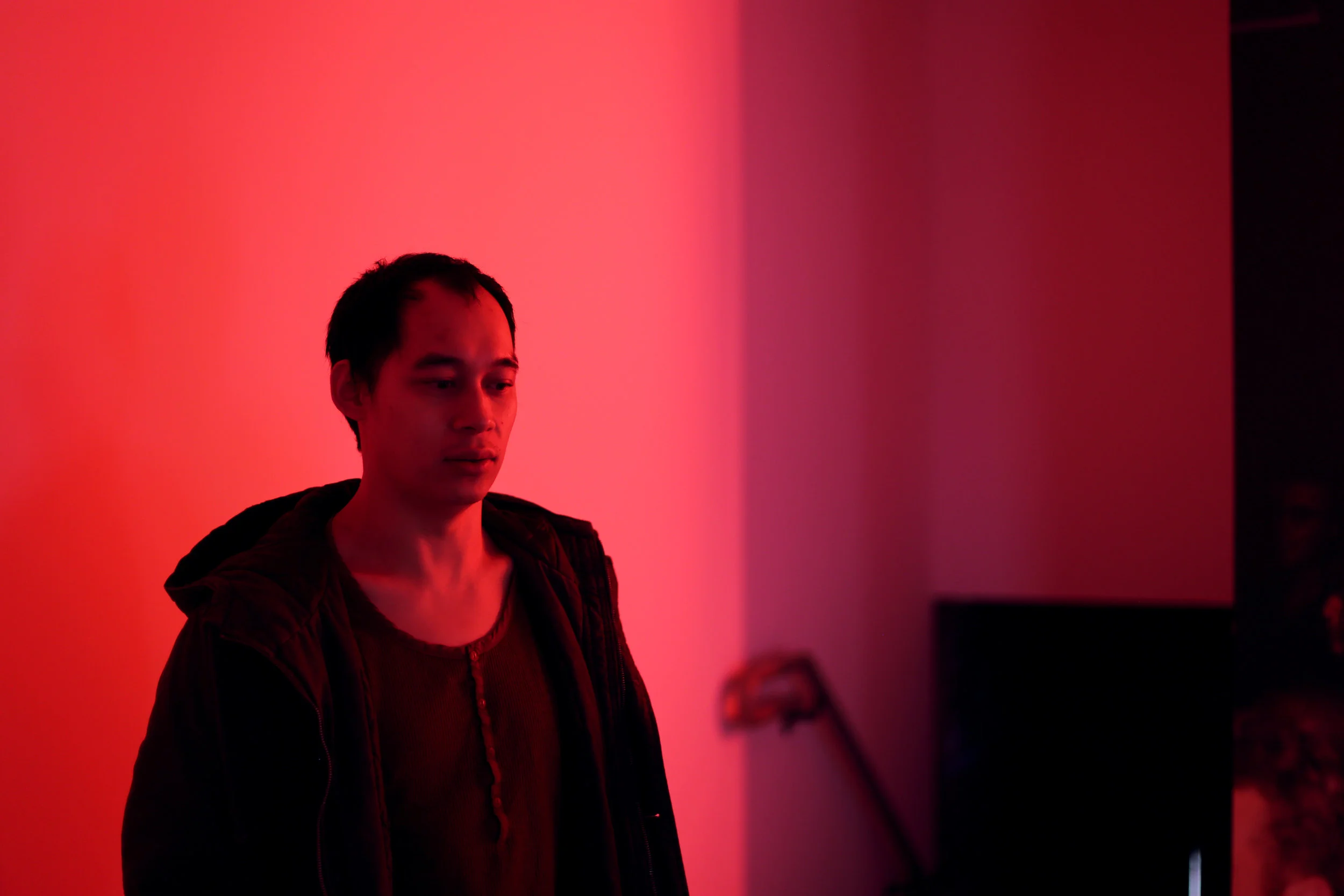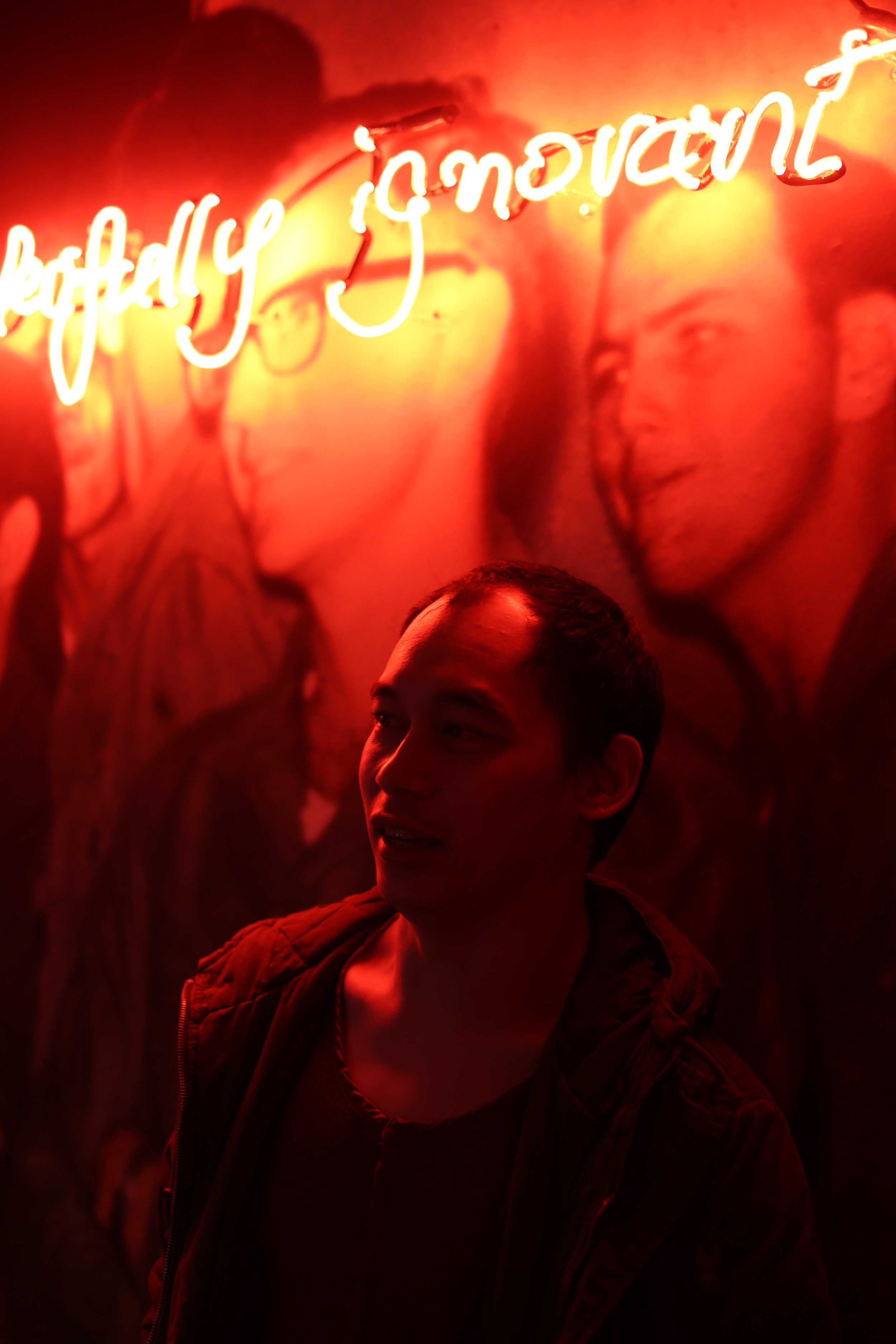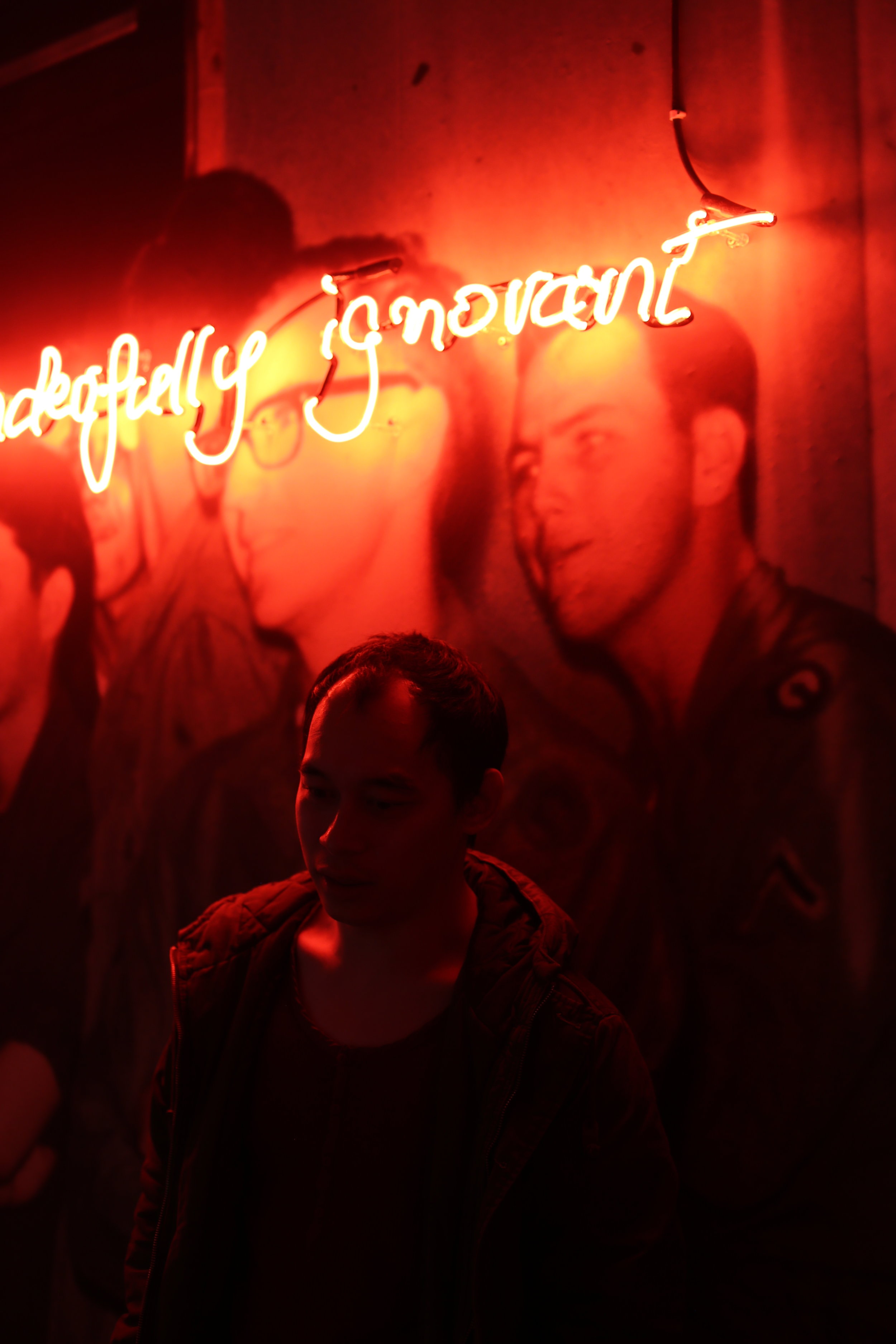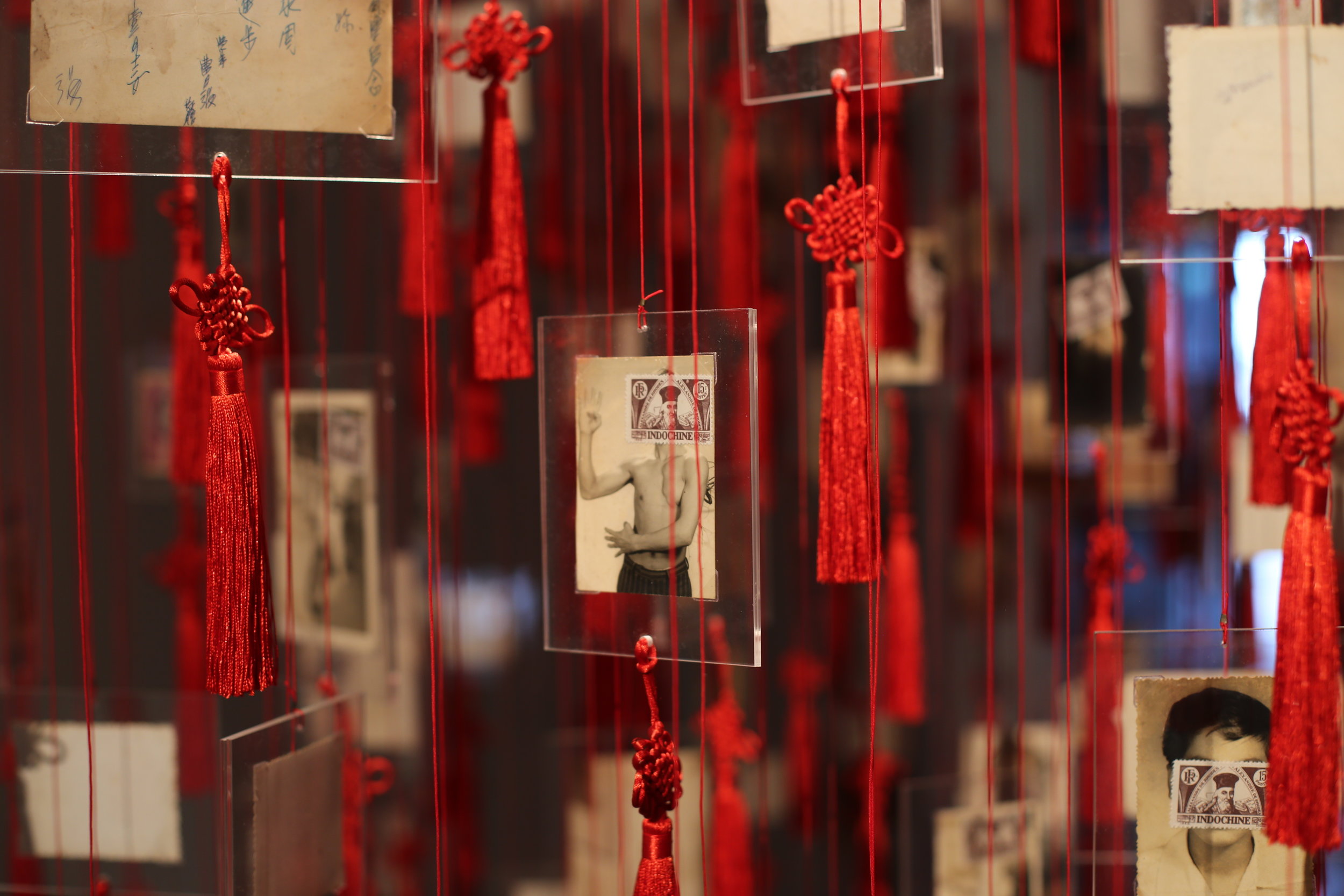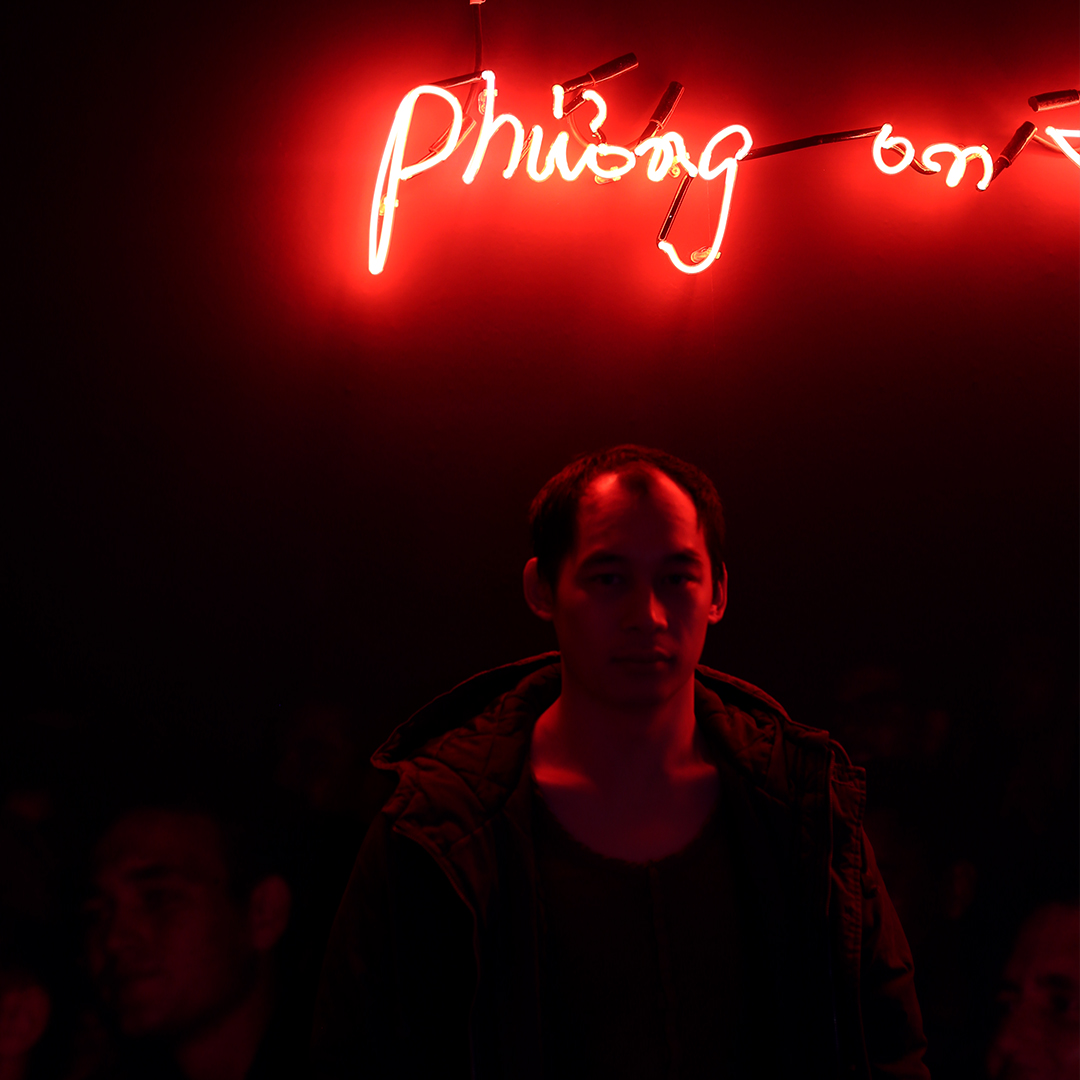Interview #48 — Phuong Ngo
by Linh Nguyen
Phuong Ngo is a contemporary visual artist based in Melbourne. His practice explores the individual and collected identity of the Vietnamese diaspora through the exploration of history, politics and culture.
Phuong spoke to Linh Nguyen about the legacy of displacement, his ongoing work ‘The Vietnam Archive Project’, and his upcoming exhibition at the Substation, Hyphenated.
Can you talk about the trajectory of your career in the contemporary visual arts? What drew you to it?
Most of my work comes out of a need to make sense of my personal and collective history. I’m interested in exploring questions of memory, identity, displacement and place. My practice comes out of a desire to unpack the legacy of war and conflict, particularly the experiences of my family. Through my work, I’m trying to form my own fragmented understanding of how contemporary Vietnamese identity has been shaped and formed.
What is it about politics of the disenfranchised that hits so close to home for me? Why do I care so much about socio-economic issues? My first work, ‘Welcome to my Place’, was an investigation into my childhood and my upbringing. This series of images was about my family home in Adelaide; it was about trying to come to terms with the shame of poverty and the shame I once felt about being the child of refugees. There are things that you realise in hindsight – for instance, when I was young, I never went hungry, but it didn't mean that my parents never went hungry.
After that I made a work about my parents’ homes in Vietnam (Before Pulau Bidong). It tells the story of my family through old, found photos of the houses they lived in before and during the war. Following this I went back to Vietnam and shot theses portraits (Family and I), and my work has just grown from there.
Visiting Vietnam has become a crucial part of my practice, whether it be research or sourcing materials. It almost feels like going ‘home’, but it’s still a home that isn’t my home.
How often do you go back to Vietnam?
I’ve been back to Vietnam almost every year since 2009. It was a severe cultural shock when I first went back. People in Vietnam don’t relate to me as ‘Vietnamese’ – they just see me as a Việt Kiều. It’s funny, because when I was travelling in Europe I developed a habit of finding Vietnamese people wherever I went. I would go into Vietnamese restaurants and just talk to people in Vietnamese, which is really weird because I would rarely do that in Australia.
Although my parents first arrived in Melbourne when they came to Australia, they were moved to Adelaide because that was where most of their community from Vietnam was relocated and resettled. It's a strange form of displacement, almost as if a whole village was shifted to a different side of the world.
It's sometimes difficult for second-generation migrants or refugees to justify working in the creative fields. How do you navigate this tension?
Pursuing a career in the creative fields is a luxury, to some extent. This is why the Arts are predominantly filled with middle-upper class white kids. When you've struggled to put food on the table, the mentality is often ‘why would you go out and choose to deliberately be poor?’
My friends and I sometimes talk about the ‘Mum and Dad’ degree – the vocational degree you do before you pursue your creative calling. Before I studied art I was doing research in International Politics. Although my parents weren’t too concerned with me being a doctor or a lawyer, they still value prestige. There’s that vein of competitiveness which migrant parents have with their friends – you can’t simply go out and say “my kid is a conceptual artist!”
I do think that, coming from a migrant or refugee background, in some ways we're also really well primed to navigate the vagaries of being an artist. We know what it is to struggle and to be financially precarious, and we’re adept in the art of know how to doing more with less. We’ve built up resilience and we possess the tools to adapt.
It’s hard sometimes for me not to view art as a luxury when I consider the history of my ancestors. It’s a luxury afforded to me by the sacrifices that my parents made. I would not have the political freedom to do this work otherwise.
Can you talk a bit about ‘The Vietnam Archive Project’? You describe it as ‘an obsession in owning my own history.’ It’s been exhibited in ‘Melbourne Now’ and last year at the Substation, and it currently encompasses over 20,000 images collected over seven years.
The archive began as an accidental discovery. In 2010, I came across a collection of slides on eBay, shots taken by an American soldier during his time in Vietnam. I was curious, so I approached the seller and bought the set. The images in that first collection were incredible. That first find got me started on a project that is still continuing, and now it’s snowballed into this huge collection. I have 15,000 slides and thousands of photos, objects and documents at the moment. The images date from the French colonial period right through to the 80s. Most of what I find is shot during the war – probably about ninety percent of it – but there’s a small part that’s colonial and post war too. There are rules that I set for myself when I collect; for instance, I try not to buy broken up sets, I buy full sets of slides so that historical integrity is preserved. Some of the slides are numbered and dated, so you can work out what belongs together, but the ones that aren't you have to work out which roll of film it came off based on the colour temperature produced when the film was processed. That’s how you determine which images belong together, and then it's up to you to decide what order they go in.
I see my archival project as an intervention into how historical narratives are constructed, produced and disseminated. The archive has really shaped and informed my practice, as well as existing as an invaluable research tool.
How has the broader diasporic Vietnamese community received your work?
It’s difficult. There is no easy way to address these questions and issues. I’m a visual artist, so much of my process is internal and insular, but I would like to engage more with the community itself.
Often, elite cultural institutions like the NGV, the MTC or even the Wheeler Centre are very imposing, overbearing structures. How do you engage people who do not have the access or the language to participate in mainstream art institutions? These spaces, which are dominated by whiteness, can feel very uninviting. How do we get other people through the door, particularly those who live in the outer-suburbs and rarely come into the inner city? I tend to gravitate towards the Western suburbs because I feel much more comfortable in those spaces. For me there's a real sense of my community in those areas as well.
I think community art and community-arts based projects is where it needs to start. Community art holds a very important role in catalysing engagement in the arts as a whole, particularly through elevating the voices of those often marginalised within predominantly white spaces.
Tell us about Hyphenated, the upcoming exhibition you’re curating at the Substation.
It’s a show I’m curating alongside Tammy Wong Hulbert. Working in the creative fields, it’s difficult to connect with other Asian diasporic artists. This exhibition is collaborative project between a range of Asian artists across Victoria.
The premise of this exhibition is about unpacking the colonial constructs of Australian identity and exploring the historic and ongoing relationship Asian communities have had with this country. We were conscious of the exhibition not being so heavily Chinese centric, which is often the case with Asian representation in Australia, in part due to the history of the Gold Rush. However, our community is much more diverse than that. Hyphenated features artists from the Kurdish, Iranian, Thai, Indian diaspora…
Too often ‘Asia’ is seen as a homogenous entity or a monolithic culture. Even within a small country like Vietnam there are over 54 distinct ethnic minorities. There is so much diversity within such a tiny pocket of land, let alone the whole of Asia, and we wanted to address this.
Can you speak a bit about the name of the exhibition?
The artists that we’re working with all touch upon the notion of the ‘hyphen.’ When we speak about ‘Asian-Australian’ or ‘Australian-Asian’ identity, the ‘hyphen’ is actually a lot more complicated than just a line. It’s not a simple dash; there are nuances and gradients in between. The hyphen isn’t static, it extends, contracts and ocelates. For many of the artist in the show there are multiple ‘hyphens’ relating to ethnicity, nationality, gender and sexuality. This complex understanding of the hyphen is what we’re interested in.
We’re just starting to build these networks and relationships, and the idea is that off the back of this exhibition we will form more projects and collaborations organically. We don’t know what the final outcome of these conversations will be, but we do know they will be ongoing.
This is a question that we ask in all of our interviews, but it’s also pertinent in relation to your upcoming exhibition. What does being Asian-Australian mean to you?
There is no definitive answer to what being ‘Asian-Australian’ or ‘Australian-Asian’ means. You can’t lock it down or pinpoint it; it really depends on your position at any given point in time. I find that questions of culture, heritage, history and identity are always in flux – it fluctuates so rapidly depending on where you are, who you are with, and what you are doing at any given point in time.
For me, the question is: how do I reconcile the sense that I feel more ‘Australian’ in Vietnam and more ‘Vietnamese’ in Australia? How do I come to terms with the fact that I belong to neither and both? If I were to geographically and metaphorically represent where I ‘belong’ it would probably be my parents’ refugee camp, which sits in the middle of both countries. My cultural identity is informed by decisions that were made prior to my existence, and the trauma that I have inherited.
I don’t think there’s any way to answer the question ‘What does it mean to be Asian-Australian’ or ‘Vietnamese-Australian’ or ‘Chinese-Australian’, or indeed, any ethnicity or cultural identity. I feel it is important, as people belonging to a diaspora, we need to query and unpack this in regards to the legacy of Whiteness and European settler-colonialism in this country.
The fact that we benefit from the ongoing violence toward Indigenous peoples and the structures of settler-colonialism is an issue that many non-white communities in Australia struggle to address.
There is a tension that we face when we exist as both displaced peoples and colonizers. We come from a legacy of colonialism, imperialism, displacement, yet we are also occupiers and settlers on colonised land.
Racial hierarchies are often formed by pitting different minority groups against each other. This is how structural power is maintained. We see this in how some Vietnamese people support Pauline Hanson in her views, which in recent years has extended to many former boat people carrying conservative anti-refugee and immigrant sentiments.
Do you have any advice for emerging artists?
Learn to be critical of your own work and surround yourself with people who are willing to be critical of your work. Invest time into research, development and experimentation. Be organised and professional. Be willing to shelve ideas until they can be resolved. You don’t have to say yes to everything, learning to say no is important. Your exhibition is only as good as the weakest work—learn to edit!
Who inspires you?
My family.
What are you currently listening to?
Childish Gambino is getting good rotation at the moment!
What are you currently reading?
Just starting ‘The Coconut Children’ by Vivian Pham, which was recommended to me by my dear friend Sheila. Counteless research into South East Asian politics and all things colonial.
How do you practice self-care?
I don’t, really. So long as I am pursuing what intellectually interests me I am content.
Find out more
Interview by Linh Nguyen
Photographs by Leah Jing McIntosh

